Cisco CCNP ROUTE Configuring Redistribution into RIP
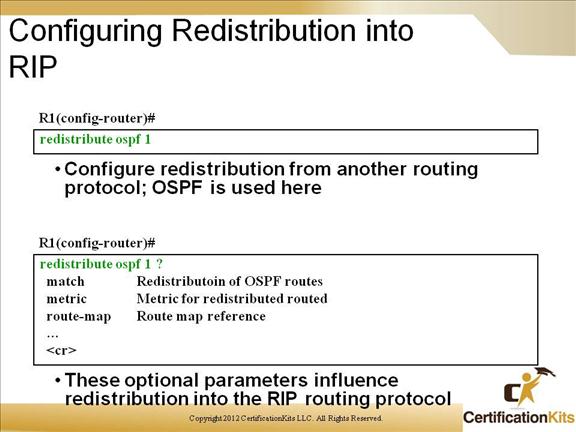
The above slide show commands within router rip configuration mode that are used to redistribute OSPF into RIP.
Cisco CCNP ROUTE Redistributing into RIP
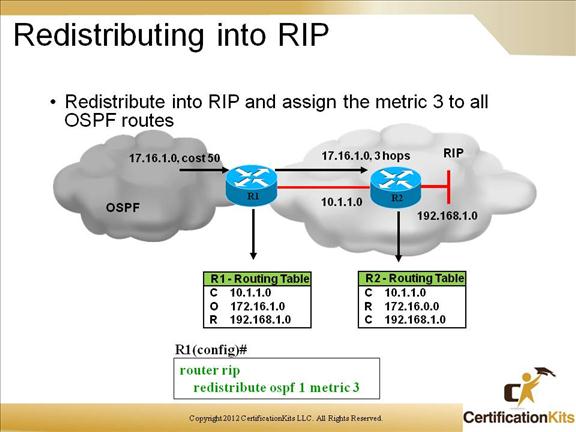
The above example shows OSPF routes being redistributed into RIP using a default metric of 3 for all OSPF routes being injected into RIP.
Cisco CCNP ROUTE Configuring Redistribution into OSPF
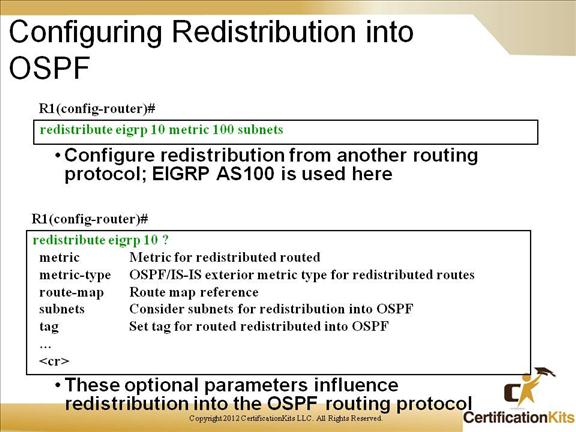
The above slide shows how to configure route redistribution from EIGRP AS 10 into OSPF.
The first step is to enter OSPF router configuration mode. The next step is to enter the appropriate redistribute command using appropriate parameters as required.
Cisco CCNP ROUTE Redistributing into OSPF
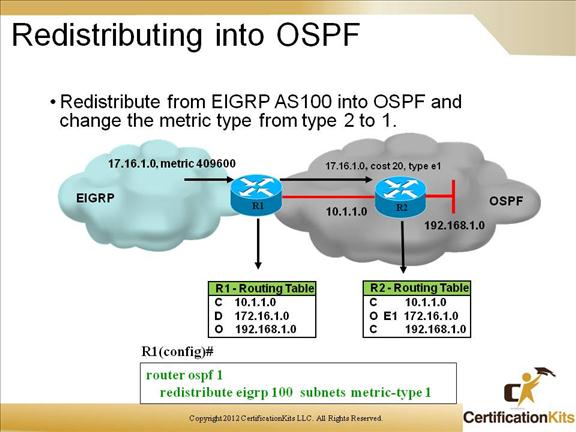
The above example shows EIGRP routes being redistributed into OSPF using a metric type of 1 for all EIGRP routes being injected into OSPF.
Cisco CCNP ROUTE Configuring Redistribution into EIGRP
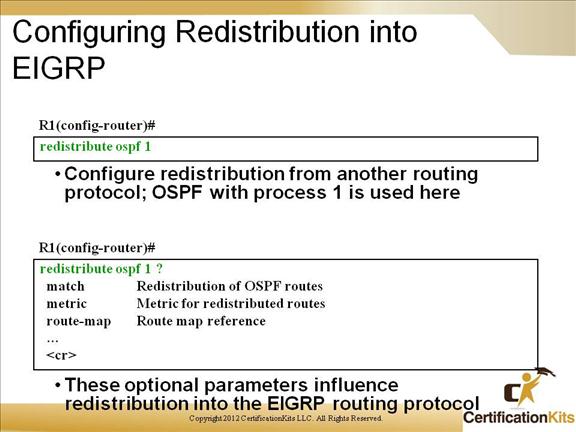
The above slide show commands within router eigrp configuration mode that are used to redistribute OSPF into EIGRP.
Cisco CCNP ROUTE Default Metric
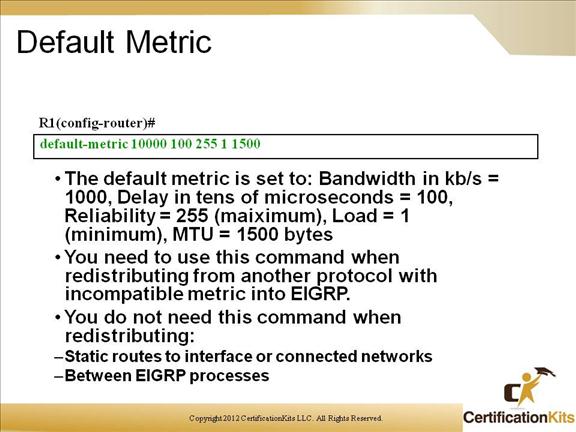
Default metrics are not needed to redistribute EIGRP into itself. Use the default-metric command under router eigrp configuration mode to set the default metric. EIGRP can use five metrics which are bandwidth, delay, reliability, load and maximum transmission unit (MTU). By default only bandwidth and delay re used in calculations.
Cisco CCNP ROUTE Redistributing into EIGRP
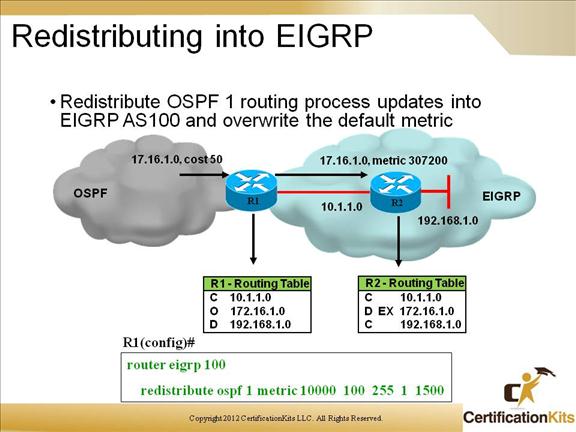
The above example shows OSPF routes being redistributed into EIGRP using a default metric of 10000 100 255 1 255 for all OSPF routes being injected into EIGRP.
Cisco CCNP ROUTE Administrative Distance
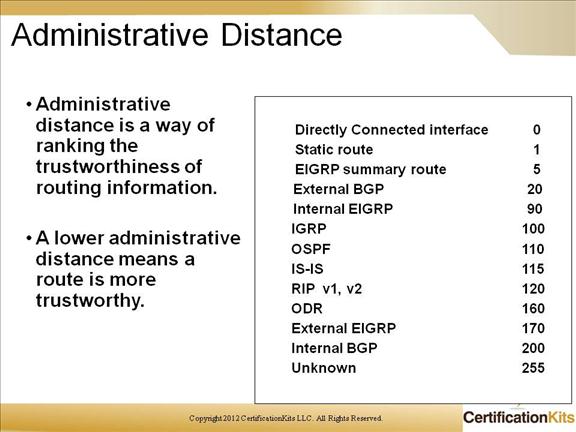
The slide above lists the default Administrative Distance (AD) for different routing protocols. Note: The lower the AD the more trustworthy the route. The AD for any routing protocol can be changed. Typically the AD would be changed if the network is in transition from one routing protocol to another. During the transition manipulating the AD could be a way of manipulating the routes.
Cisco CCNP ROUTE Administrative Distance Example
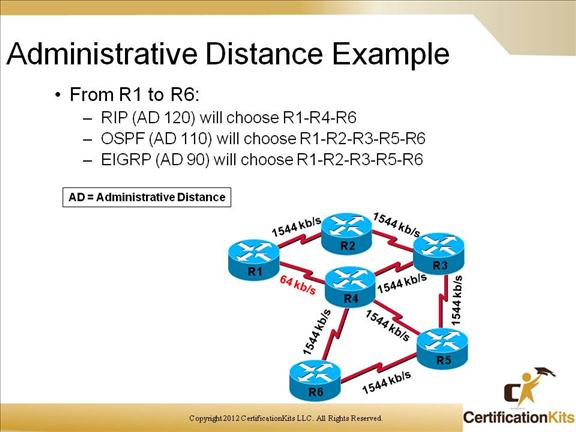
As you can see from the slide above, traffic from R1 to R6 could take different routes based on the routing protocol being used. This is because each routing protocol uses different metrics to determine the best route to a destination. When multiple routing protocols are used, Administrative Distance (AD) is used to choose the routing protocol (lowest AD is preferred).
Cisco CCNP ROUTE Steps to Configure Redistribution Using Administrative Distance
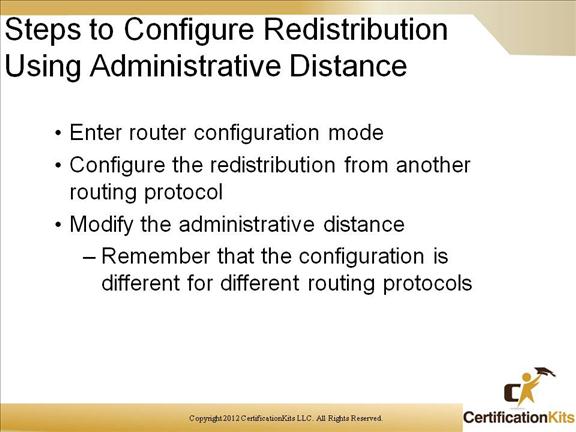
The Administrative Distance is changed within router configuration mode and the configuration is different for different routing protocols.
Cisco CCNP ROUTE Modifying Administrative Distance
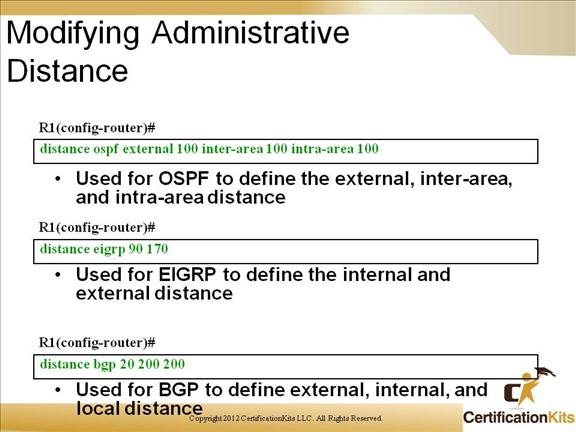
The above example shows an example of defining the Administrative Distance of OSPF, EIGRP and BGP. For OSPF, three different distances can be defined: external, inter-area and intra-area. For EIGRP, two different distances can be defined: internal and external. For BGP, three different distances can be defined: external, internal and local.
Cisco CCNP ROUTE Modifying Administrative Distance
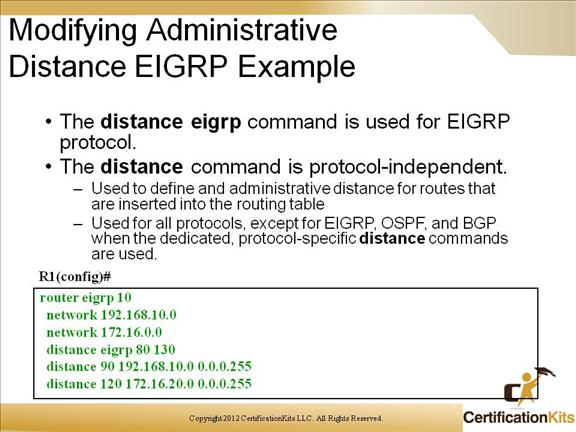
The above example shows multiple variations to the distance command within router eigrp configuration mode.
Cisco CCNP ROUTE Modifying Administrative Distance
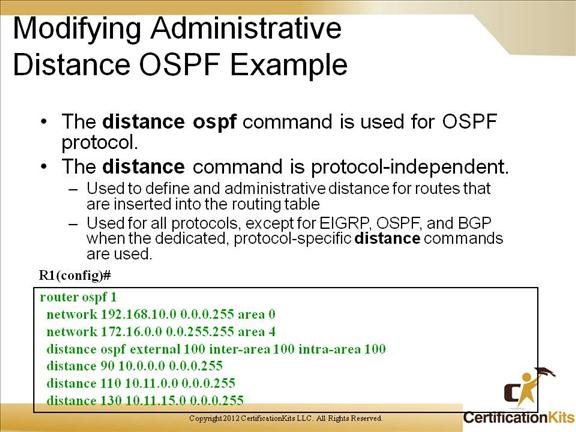
The above example shows multiple variations to the distance command within router ospf configuration mode.
Cisco CCNP ROUTE Redistribution to Prevent Routing Loops
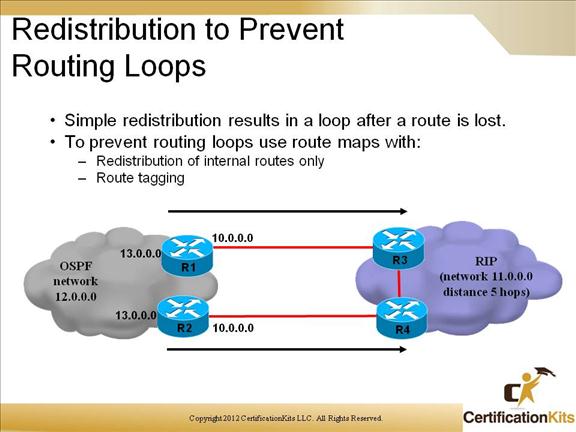
Route maps are the most common way to prevent routing loops when redistributing routes.
Cisco CCNP ROUTE Partial Solution with Route Tagging
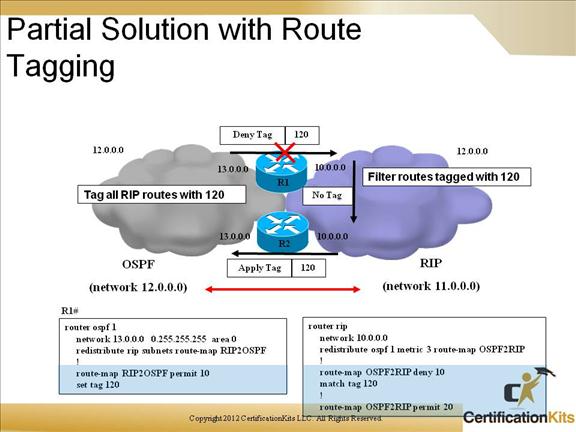
The above example shows the use of route maps when redistributing between OSPF and RIP.
Cisco CCNP ROUTE Redistribution with Tagging Verification
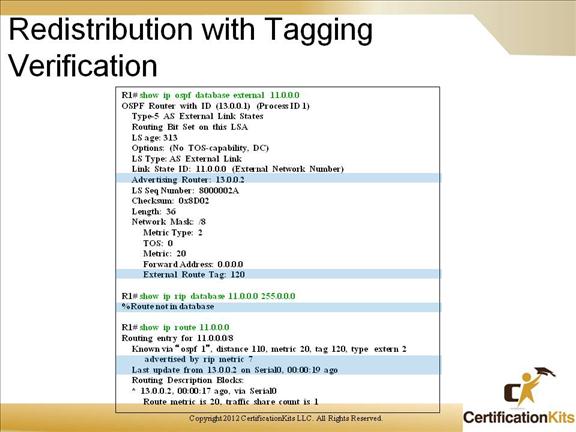
The above slide will resolve the routing issue for network 11.0.0.0. Network 11.0.0.0 will be redistributed into OSPF but not be redistributed back into RIP.
Cisco CCNP ROUTE Key Knowledge
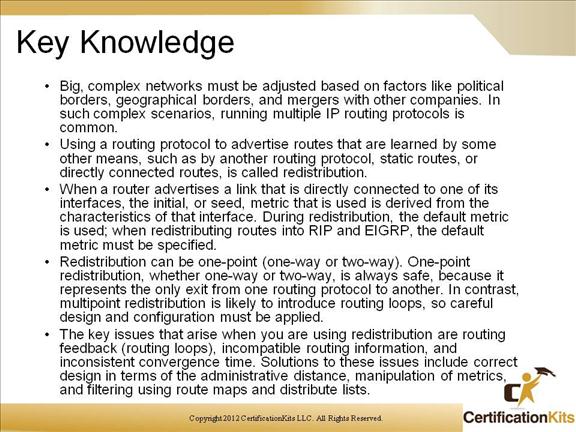
Key knowledge needed when implementing one-way or two-way route redistribution.
Cisco CCNP ROUTE
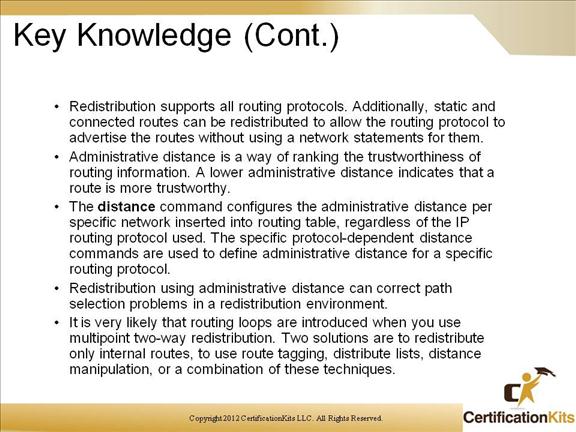
Continuation of key knowledge needed when implementing one-way or two-way route redistribution.
